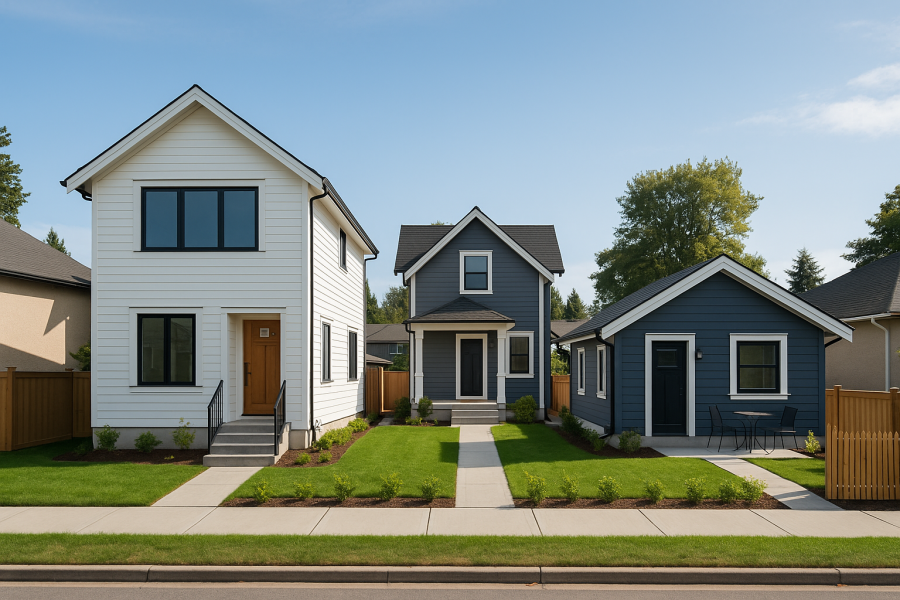Building on ALR Land in BC: What You Need to Know
If you’re planning to build on ALR land in BC, you already know it’s a mix of excitement and red tape. The Agricultural Land Reserve offers space, privacy, and the appeal of rural living, but it also comes with some of the province’s most restrictive land-use rules.
At Revere Homes, we’ve helped clients across Langley, Chilliwack, and the Sea-to-Sky navigate these rules and still create homes they love. Here’s what you should know before you start.
What Is the ALR?
The Agricultural Land Reserve was created in 1973 to protect BC’s farmland from being lost to development. It’s managed by the Agricultural Land Commission (ALC) and covers over five million hectares, with much of it in the Lower Mainland and the Fraser Valley.
Regulations have changed over time, with some major updates in 2020. These days, the rules around what you can build are more detailed than ever. For example:
-
Primary homes are capped at 500 m² (5,382 sq. ft.)
-
One attached secondary suite is allowed, plus one detached unit (garden suite, carriage house, or manufactured home) up to 90 m² (970 sq. ft.) on properties under 40 hectares, and up to 186 m² (2,000 sq. ft.) on properties over 40 hectares
-
Secondary units can now be rented out or used for farm help or extended family; no “immediate family only” restriction
The ALC sets these allowances but municipalities can add their own rules, and sometimes those are stricter. This layered approach to policy and legislation can be very confusing, even for the people who work for the ALC themselves. So don’t feel bad if you’re having trouble making sense of it. You are not alone.
Who Makes the Rules?
Building on ALR land is regulated at two levels:
-
The ALC controls what’s allowed in the reserve, province-wide.
-
Your municipality controls zoning, siting, design, and permits.
It’s possible for the ALC to allow something your municipality won’t approve. That’s why experience with both systems is so important.
For more information regarding residential uses in the ALR, you can read the ALC Residential Use Bulletin; or, talk to us. We have experience working inside local government operations and directly with the ALC, so we can help.
Why ALR Experience Matters
Navigating ALR requirements isn’t just about reading the rules. It’s about knowing how to work within them. We’ve dealt with:
-
ALC land-use policies and compliance teams
-
Local planning departments in multiple municipalities
-
Zoning and permitting for secondary dwellings
-
Rural infrastructure and servicing challenges
We help landowners figure out what’s actually possible, design homes that meet both ALC and municipal standards, apply for any special permits, and get the project built without losing sight of comfort, style, or agricultural function.
Common Questions We Hear
How big can I build?
Up to 500 m² for a primary home. Larger builds require proving they support active farming and getting a Non-Adhering Residential Use Permit from the ALC.
Do I need to be farming?
Not necessarily, but your home has to be “accessory to farm use,” meaning it should support the land’s agricultural potential, even if you’re not farming now.
Can I build a second dwelling?
Yes, in most cases. The ALC allows one suite inside the main home and one small detached dwelling. These can be used for rental income, farm help, or family. Your municipality’s zoning still applies.
Where can I build?
You’ll usually need to build in a way that protects farmland. This can be a little vague, but often things like building near existing roads, avoiding prime soil, and leaving areas open for agriculture are what the ALC will require.
Will I have full services?
Not always. Many ALR properties need septic systems, wells, or private utilities.
What permits will I need?
Municipal building permits for sure, and sometimes ALC approval if your plans fall outside standard allowances.
Thinking About Building on ALR Land?
Whether you’re creating a rural family home or adding a rental unit, the ALR’s overlapping rules can make it complicated. We know how to work with both the ALC and your municipality to get your project moving and built right.
If you’ve got ALR property in mind, we can assess your lot, explain your options, and design something that checks all the boxes without compromising what you want from your home.


